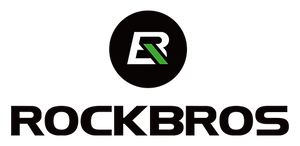and contributes to energy savings and emission reduction,
but is also an excellent opportunity
to shape the body and strengthen muscle groups.
Cycling engages almost all of the body's muscle groups. The training effect depends heavily on personal commitment—the more effort, the greater the results.
poor
While riding, the muscles of the forearms are trained by holding the handlebars and applying the brakes. Steering strengthens the biceps and triceps muscles. Although the focus of cycling is often on the legs, the arms and shoulders also perform a significant amount of work. They support the upper body and provide stability and balance, with the triceps in particular playing an active role.

Figure: The red areas show the position of the biceps and triceps muscles.
shoulders and back
The deltoids and pectoral muscles support the upper body. This constant bracing is similar to the push-up position and strengthens the arms, shoulders, and chest. At higher speeds or when riding uphill, the back muscles, especially the latissimus dorsi, are more intensively engaged, contributing to an upright and athletic posture.

Figure: The red area shows the position of the latissimus.
buttocks
The buttocks, especially the gluteus maximus, are particularly stressed when pedaling. This largest muscle group in the body ensures a well-shaped silhouette. The hamstrings, which are active when bending the knees, also contribute to the rounding of the buttocks.

Figure: The red area shows the position of the gluteus maximus.
torso and abdomen
The core muscles, consisting of the back and abdominal muscles, remain engaged while cycling, which helps burn excess fat and strengthen the core. The abdominal muscles support the spine and ensure that the power generated by the upper body is effectively transferred to the legs.
Thigh
The thighs, especially the quadriceps muscles, are the main engines of cycling. They power the legs and are active with every pedal stroke. Contrary to the fear that cycling thickens the thighs, this endurance sport helps strengthen and define muscle contours.
calves
The calf muscles, consisting of the soleus and gastrocnemius, are particularly effectively trained when the forefoot is placed on the pedal. These muscles transfer power from the thighs through the feet to the pedals, contributing to the formation of lean and toned calves.

Safety and muscle training
In addition to muscle training, safety plays a crucial role when cycling. The right protective gear, such as a helmet , knee pads, and cycling gloves , not only protects against injuries but also increases comfort and supports optimal posture. This reduces strain on the muscles and makes training more effective.
With the right equipment and posture, cycling can be a safe and effective full-body exercise that's not only enjoyable but also promotes health and builds physique. Remember: protection and proper technique are just as important as the training itself to make every ride a perfect experience.
ROCKBROS : Your partner for a safe and comfortable ride
ROCKBROS wants to accompany you on every ride, offering you safety and comfort with high-quality bicycle accessories such as helmets, gloves, and much more. Discover our wide range and make every ride a pleasant experience.

